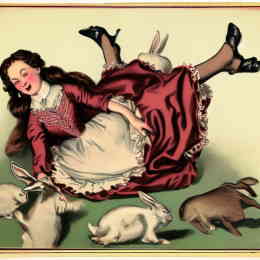Era of Elegance: The Victorian Stance on Architectural Tradition


Introduction
The Victorian Era, spanning the mid to late 19th century, was marked by a distinctive character of grandiosity, an embrace of tradition, and a fervor for progress. As the era traversed times of significant change, the world of architecture wasn't left behind. Buildings more than just stones and beams, became reflections of the age, its values, and its aspirations. Let's embark on a journey to explore the architectural marvels of this era, their origins, significance, and the transformative influence of new art movements.
Origins & Influence
The Victorian era, named after Queen Victoria who reigned from 1837 to 1901, was a time when Britain was at its zenith. From an architectural standpoint, the structures from this period mirrored a blend of styles from earlier periods, often combined in unexpected ways, and were characterized by intricate details and ambitious forms.
These designs weren't just plucked from the ether. The 18th-century Gothic revival, an homage to medieval design, heavily influenced the Victorian style. Then, there were traces of Italianate styles, a rekindling of the classics, and even dashes of Romanesque motifs. Such eclecticism was no accident; it was a conscious dive into the past, a tribute to tried and tested aesthetics.
Architecture: Function and Value
Victorian architecture wasn't merely about beauty; it encapsulated the function and evolving societal values. As urbanization rapidly changed the British landscape, architecture adapted. Buildings transformed to accommodate growing populations, commercial needs, and new technologies.
Row houses, with their tall, slender silhouettes, became a staple in burgeoning cities. Factories, symbols of the Industrial Revolution, also showcased Victorian ingenuity, with their robust structures and functional designs.
Yet, amidst this urban sprawl, there was an undeniable longing for aesthetic appeal. Even factories and warehouses bore ornate details, betraying a society unwilling to forgo beauty, even in the name of progress.
New Art Movement
As with all eras, the Victorian age didn't exist in a bubble. The winds of change brought with them fresh ideas and rebellious sentiments. By the late 19th century, the Arts and Crafts Movement began to leave its mark. Led by visionaries like William Morris, this movement was a critique of industrialization and its perceived degradation of the artistic soul.
This "New Art" (or what would later be termed as Art Nouveau in France) advocated for a return to handcrafted works, organic motifs, and a harmonization of form and function. Buildings from this period, with their fluid lines and nature-inspired details, stood in stark contrast to the symmetrical and heavily ornamented Victorian edifices.
Yet, interestingly, the Victorian architectural ethos didn't view this as a threat. Instead, it adapted, integrating elements of the New Art, thereby once again demonstrating its characteristic trait: eclecticism.
Conclusion - Representing the Age
The beauty of the Victorian Era, especially in its architectural prowess, lies in its duality. It clung to the past, drawing from ancient styles and traditions, even as it stood on the cusp of a new age, heralded by industrialization, modernization, and fresh artistic movements.
Consider Victorian architectural landscape as a canvas, painted with the brushes of tradition and innovation. It represented an age that was both rooted in its past and keenly looking ahead.
Buildings from this era stand as testimony to the Victorians' aspirations, their love for detail, their commitment to function, and their adaptability. They serve as a bridge between ages, seamlessly blending the wisdom of the past with the promise of the future.
For anyone keen on architectural beauty, the Victorian era offers a treasure trove of insights. It reminds us that architecture, like history, isn't linear but a rich tapestry of interwoven threads, each telling its own unique story.
References
- The Victorian Web - An academic site that covers various aspects of Victorian culture, including architecture.
- English Heritage - This site offers a deep dive into the history of English architecture, including the Victorian era.
- British Architectural Library - Housed within the Royal Institute of British Architects, this library offers a rich collection of materials on British architecture.



